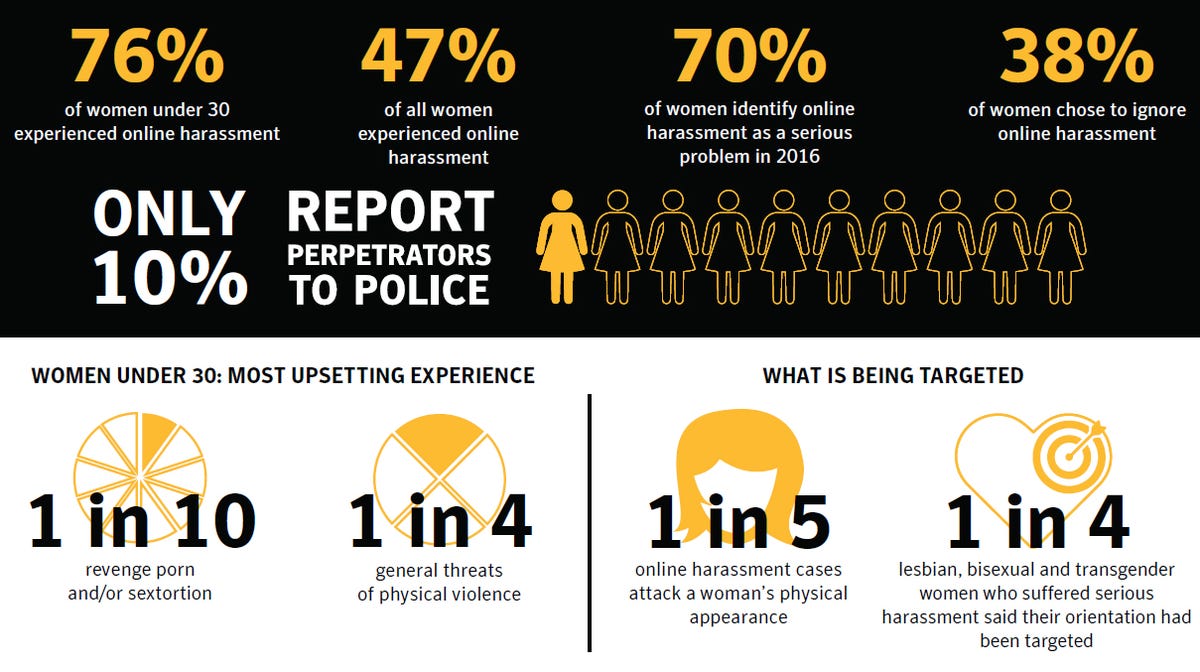“It’s not okay to just say, ‘Switch off.’ And it’s also not okay to say, ‘It’s just online, it doesn’t count.’ It does count, and it’s having a real impact on women’s lives.”
That’s the assessment of Canadian-Australian author, women’s rights advocate and UNICEF ambassador Tara Moss, who has used International Women’s Day to speak out about online harassment and the abuse of women on the Internet.
Speaking with CNET, Moss’ comments came ahead of the release of a research report by digital security firm Norton, titled “Online Harassment: The Australian Woman’s Experience.” The study surveyed 1,053 Australian women and found that almost half (47 percent) experience online harassment — a figure that rises to 76 percent for women under 30. Norton says the results from the survey show that harassment is nearing “epidemic proportions,” and Moss, who is a safety ambassador for the security company, agrees.
“Unfortunately a lot of the data just confirmed what I already knew, which is that it’s a hugely prevalent problem,” said Moss.
“Women are using online spaces everyday…it doesn’t matter what age, you’re connected now. That’s why this matters, because you’re not just talking about a small group of women who happen to do things online.”
Abuse, trolling and cyberbullying are the top cause of complaints from women who spend time online (most of whom spend at least a few hours day on the Internet, whether they’re 18 years old or 60+). But the statistics around more serious threats are also startling. One third of women under 30 have experienced cyberstalking, 26 percent have received threats of physical harassment and 20 percent have experienced graphic sexual harassment.
A staggering 1 in 10 women under the age of 30 have also been victims of sextortion (where intimate information is held at ransom) as well as revenge porn, and 16 percent have been threatened with sexual violence and rape.
These figures are thrown into stark relief when compared with the lived experience of women. According to the most recent Australian Bureau of Statistics numbers, 17 percent of women 18 years and over have experienced sexual assault since the age of 15. So 16 percent are threatened online and 17 percent experience this violence in real life.
The comparison is not lost on Moss.
“A lot of the online abuse…is intentionally triggering because it’s feeding into the higher rates of sexual violence and sexual harassment that women are experiencing in the physical world as well,” she said.
“
It’s not just words. Those words are chosen very specifically to make women feel threatened
in ways that it might be difficult to make some men feel threatened.”
While the findings make for grim reading, the survey is certainly pioneering. Now support groups, policy makers and even women themselves have concrete statistics to point to in measuring the scale of a problem that has long been regarded as simply part of going online.


Some of the findings of Norton’s report, “Online Harassment: The Australian Woman’s Experience.”
Norton
And for those that argue it’s an issue for all Internet users, the research also shows the reality of women’s experience.
“Men and women receive about equal amounts of abuse online, and that’s important to recognise,” said Moss. “But the nature of the abuse is often very different. Women are twice as likely to receive death threats online, and women are also twice as likely to receive threats of sexual violence and rape. They’re also more likely to be the target of revenge porn, sextortion and sexual harassment.”
When it comes to reporting online harrassment, women can also find themselves stonewalled by community attitudes or face difficult procedures when it comes to reporting issues.
Moss says the response to gendered harassment has “unfortunate shades of offline attitudes towards abuse,” with women being advised to turn the other cheek or told, “Why don’t you just change your life to stay away from someone who’s a perpetrator?”
But this attitude needs to shift.
“We need to focus a lot more on the perpetrators of these crimes, so it isn’t about putting the onus on the victim of this abuse to change their behaviour, to move house — which is actually something that some of the women in the survey have had to do because of online abuse,” she said.
Just as women shouldn’t have to move house, they shouldn’t have to spend days screenshotting graphic threats as a way of documenting abuse (as Moss herself was asked to do when she tried to report abuse to one social network). And most importantly, for a woman who is a prolific Instagrammer, Tweeter and blogger with a strong online following, Moss says women shouldn’t have to go offline.
“This is horrible advice because you’re just leaving the internet to the bullies, and you’re penalising the victim or the subject of abuse. It’s the perpetrators that need to be changing their actions, not the people who are the subject to crimes.”




